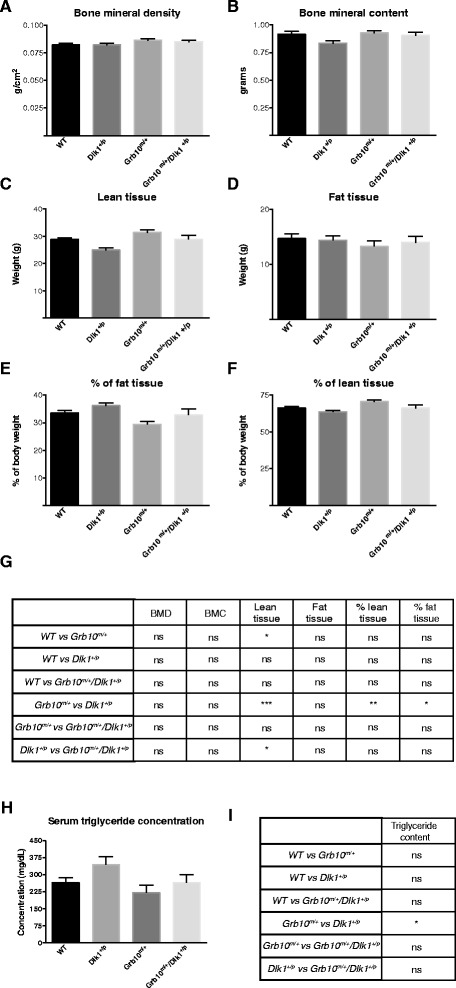Figure 7.

DXA analysis of male mice and levels of triglycerides in serum. Carcasses of male animals three- to nine-months old were subject to body composition analysis by Dual X-ray absorptiometry (DXA). No differences were seen in: A) bone mineral density (BMD); or B) bone mineral content (BMC). C) Total lean tissue mass was significantly elevated in Grb10 m/+ animals when compared to wild type and Dlk1 +/p mice and in Grb10 m/+ /Dlk1 +/p animals when compared to Dlk1 +/p . D) No differences were observed in total fat tissue content. E) Lean mass as a percentage of total body mass was significantly increased in Grb10 m/+ mice in comparison to Dlk1 +/p mice. F) Fat mass as a percentage of total body mass was significantly reduced in Grb10 m/+ mice in comparison to Dlk1 +/p mice. G) Table summarising results of statistical analysis of data in A-F. All values represent means ± SEM and have been subject to one way ANOVA with post hoc Tukey’s analysis. WT n = 14, Dlk1 +/p =12, Grb10 m/+ n = 12 and Grb10 m/+ /Dlk1 +/p n = 12; * P <0.05; ** P <0.01; *** P <0.001. H) Triglyceride levels in blood serum measured in three-month-old male mice. Dlk1 +/p mice were found to have significantly elevated levels of triglycerides in blood serum in comparison to Grb10 m/+. I) Table summarising results of statistical analysis of data in H. All values represent means ± SEM and have been subject to one way ANOVA with post hoc Tukey’s analysis. WT n = 6, Dlk1 +/p n = 6, Grb10 m/+ n = 6 and Grb10 m/+ /Dlk1 +/p n = 6; * P <0.05. ANOVA, analysis of variance; SEM, standard error of the mean; WT, wild type.
